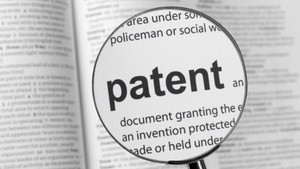Since the existence of a legal pathway for biosimilars was made possible by the signing of the 2009 Biologics Price Competition and Innovation (BPCI) Act in 2010 by President Barack Obama, FDA has declared itself ‘open for business’ for biosimilars [1]. But what is the thinking of FDA and what should we expect from any guidance on biosimilars?
FDA and biosimilars: update on key themes
Biosimilars/General
|
Posted 26/08/2011
 0
Post your comment
0
Post your comment

Key themes
Although no formal guidance has yet been prepared by FDA, some key themes can be identified regarding the implementation process, based on public presentations by agency officials and notices released as part of the biosimilar user fee negotiations.
FDA appears to be moving towards a 3-step process, with drugmakers having first to establish ‘similarity’, followed by ‘biosimilarity’, and then finally ‘interchangeability’.
Similarity
Potential biosimilar applicants would first need to establish ‘similarity’ of the molecular structure to the reference biological using state-of-the-art analytical technologies.
During this time a ‘hard-stop’ would be put on any further clinical development until FDA could advise what the human clinical testing should look like. This underlines the FDA’s belief that, due to their complexity, it will need to act on a case-by-case basis for the review of biosimilars.
Biosimilarity not interchangeability
FDA believes that in order to comply with the law (BPCI Act) biosimilarity must first be established before any studies to prove interchangeability can be performed.
Once biosimilarity has been established drugmakers can then decide whether to further pursue interchangeability or not. This approach, however, has raised questions as to what would happen if a product was deemed not interchangeable [2].
Not simply comparability
FDA seems to have rejected proposals that biosimilar approvals should be based on the same requirements for simply establishing comparability of clinical and commercial lots for the originator biological or for changes in manufacturing site/processes.
The reason for rejecting these proposals are mainly due to the fact that, while the originator biological has access to all its own data, the biosimilar will not have access to this data.
Ethics
Although FDA insists that it is not willing to waive clinical trials for biosimilars, the agency has also stated that it is committed to the fact that it is not ethical to conduct clinical trials to demonstrate something you already know. FDA has often given enoxoparin as an example, although this was approved via the generic drug pathway and is a somewhat simpler low molecular weight heparin molecule compared to many of the protein drugs that are now potential targets for biosimilars.
Tracking biosimilars
FDA also places quite some importance on the ability to be able to trace a biosimilar back to the manufacturer and also believes that existing systems are not up to the job.
This, it is believed, could be a rate-limiting step in the approval of the first biosimilar in the US, due to the challenges of tracking biologicals in the existing datasets.
Related articles
FDA and biosimilars: process update
Does industry support biosimilar user fees in the US?
More debate over the exclusivity period for biological in the US
Biosimilars user fees as high as brand-name fees
Biobetters rather than biosimilars
US biosimilars pathway unlikely to be used
References
1. McCaughan et al. FDA and biosimilars, mid-year update: key themes to watch. Policy Research 2011;July 18.
2. GaBI Online - Generics and Biosimilars Initiative. FDA gives some insight into biosimilar pathway [www.gabionline.net]. Mol, Belgium: Pro Pharma Communications International; [cited 2011 August 19]. Available from: www.gabionline.net/Biosimilars/News/FDA-gives-some-insight-into-biosimilar-pathway
Research
Reaching ESG goals in pharmaceutical development
What is the future for the US biosimilar interchangeability designation
Most viewed articles
The best selling biotechnology drugs of 2008: the next biosimilars targets
Global biosimilars guideline development – EGA’s perspective
Related content
Samsung Bioepis wins Pyzchiva case; Regeneron patent rulings threaten foreign biosimilars
Chinese biosimilars go global: growth, partnerships, and challenges
Stelara biosimilars enter US market with 85% discount in 2025
IFPMA publishes position on pharmacy-mediated substitution for biosimilars
Samsung Bioepis wins Pyzchiva case; Regeneron patent rulings threaten foreign biosimilars

Biosimilars/General Posted 30/07/2025
Chinese biosimilars go global: growth, partnerships, and challenges

Biosimilars/General Posted 30/04/2025
IFPMA publishes position on pharmacy-mediated substitution for biosimilars

Biosimilars/General Posted 21/03/2025
The best selling biotechnology drugs of 2008: the next biosimilars targets







Post your comment